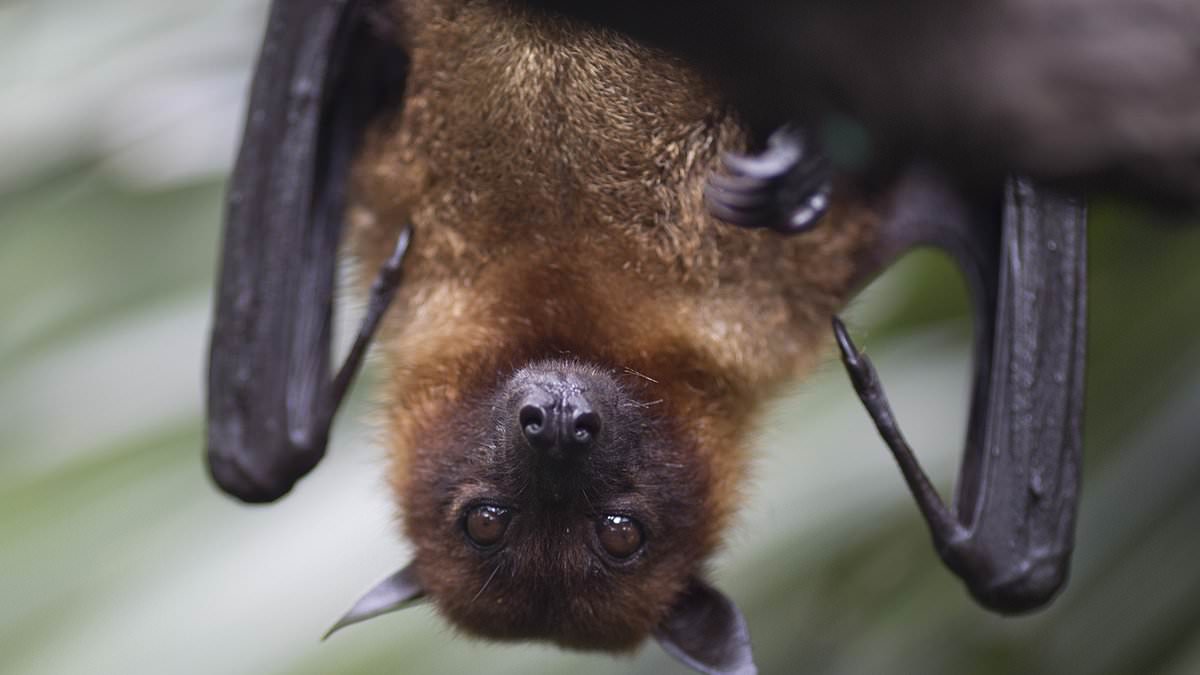A child in Ontario, Canada, has died of rabies after contact with a bat, the first case confirmed there since 1967.
The unidentified child had been in the hospital since early September after waking up one morning to a bat in their room. Officials have withheld the child’s name, age, and gender to protect the family’s privacy.
The rabies virus is transmitted to humans through the saliva of infected animals, including bats, raccoons, skunks, foxes, and coyotes. The Ontario child’s parents did not see any signs of a bite, though, and did not get the child vaccinated against rabies following the incident.
Rabies has one of the highest mortality rates of all viruses – nearly 100 percent – with fewer than 20 documented survivors.

The child did not show any signs of a bite or scratch from the bat, so their parents did not administer a rabies vaccine
Rabies kills around 70,000 people worldwide every year , though most deaths are concentrated in countries with inadequate public health resources, such as wide-reaching vaccination programs for people and animals.
In the US, fewer than 10 cases of rabies occur each year. That rate was once more than 100 before the arrival of vaccines for people and pets in the late 19th century.
The vaccine can be given after a person is exposed and is 100 percent effective if administered within 48 hours of exposure.
The Ontario child’s death was announced by Malcolm Lock, a doctor at the Haldimand-Norfolk Health Unit at a health board meeting on Wednesday.
He said: ‘They woke up with a bat in their room.
‘The parents looked, didn’t see any signs of a bite or scratches or saliva and didn’t seek getting a rabies vaccine.’
The unnamed child was exposed in an area north of Sudbury, Ontario, a rugged landscape with hundreds of lakes and at least four different types of bats.
A bat’s fangs are incredibly small and someone bit by the animal may not be able to see the mark, so doctors recommend anyone who has come into contact with a bat receive a rabies vaccine.
While common beliefs about rabies may lead people to think all infected animals are aggressive or show signs of frothing at the mouth, any changes in an animal’s usual behavior can be early indicators of rabies.
A bat that is active during the day, found on the ground, or seems unable to fly should be treated with caution.
Large swathes of Ontario’s bat population have been wiped out since the arrival of white-nose syndrome, a fungal disease first identified in New York in 2006. It causes a white fungal growth on the bats causing their skin to disintegrate over time.
It disrupts their ability to hibernate. When they wake up early, their metabolism revs up and uses up fat reserves stored for winter as they struggle to find food, leaving them malnourished and depleted of energy.
But bats are essential to the environment, keeping insect populations under control, which helps maintain an area’s ecosystem, protect against diseases, and shield crops from pests.

The above map shows which animals are most likely to be infected with rabies in certain areas
Rabies affects bats similarly to how it affects humans.
Once the virus reaches the brain, it binds to nerve cells where it can replicate uncontrollably and rapidly, erupting in a constellation of symptoms starting with fever, fatigue, and headache.
As the infection advances, it leads to respiratory spasms that cause gasping, wheezing, and tightness in the chest.
It also causes spasms in the throat while swallowing when trying to drink water, causing someone anxiety about drinking water, also called hydrophobia. People with rabies typically die severely dehydrated.
Rabies changes a person’s mental status, causing confusion, agitation, and aggression, as well as seizures in some cases. As the disease worsens, paralysis sets in, starting with the limbs.
The infection almost always results in coma and death within a few weeks after the onset if a vaccine is not administered promptly.
Worldwide, dogs are the leading carriers of rabies. But in the US, around 70 percent of rabies infections arise from exposure to bats.
Dr Lock said: ‘It’s extremely important that anyone who has a form of exposure [to bats] seeks medical attention,’ adding that treatment and vaccination should be quickly sought, even if bite marks are not immediately visible.’










